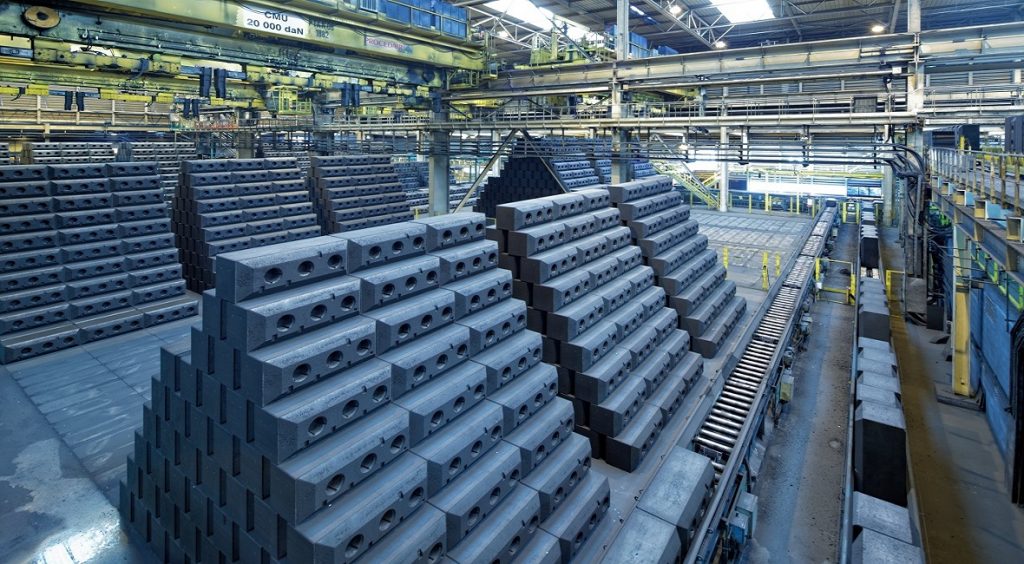
(The opinions expressed here are those of the author, Andy Home, a columnist for Reuters.)
It’s turning into a winter of discontent for Europe’s aluminum smelters as they struggle to cope with rocketing power prices across the region.
Four operators have announced curtailments totaling over half a million tonnes of annual production capacity, with others flexing output to mitigate power-load price spikes.
European aluminum consumers are already paying the price. Physical premiums have surged, the CME’s duty-paid spot contract jumping from $290 per tonne at the start of December to a current $423.

That’s over and above the London Metal Exchange (LME) aluminum price, which has also opened 2022 with a bang, hitting a two-month high of $2,938.50 per tonne on Wednesday.
Related Article: Aluminum price climbs with output facing pressure in Europe, China
Aluminum was the second-best performer among the core LME industrial metals last year as the market priced in power-related curtailments in China.
The market’s power problems have now spread to Europe.
Smelting aluminum is an energy-intensive process, power typically representing at least 30% of total production costs, albeit with significant variability depending on the source, supplier structure, and local energy market.
European power prices have hit multiple record highs over recent months and the regional energy crunch is now morphing into an aluminum smelter crisis.
“Exorbitant energy prices” were cited by US producer Alcoa as the reason for a two-year curtailment of its 228,000-tonne per year San Ciprian smelter in Spain.
The plant will be out of action by the end of this month, returning in January 2024 with renewable power contracts.
Another casualty is the KAP smelter in Montenegro, which began powering down its 120,000 tonnes of annual capacity in the middle of December.
The plant’s owner Uniprom was facing a jump in its power bill from 45 euros ($50.89) to 120 euros per megawatt-hour at the start of 2022.
The “exceptional situation on the energy and gas markets” is why Romanian producer Alro is reducing output from five to two potlines at its Slatina smelter, it said.
The 265,000-tonne-per-year plant will be operating at around one-third capacity until further notice.
Norway’s Hydro has also doubled down on the amount of capacity it is idling at its Slovalco smelter in Slovakia, citing “very high energy prices (which) show no sign of improvement in the short term”.
Production will be reduced to 60% of the plant’s annual capacity of 175,000 tonnes per year.
All four operations will maintain remelt and cast house operations, but the combined annualized hit on primary metal production will be around 550,000 tonnes.
Other European smelters are navigating the power price crunch by tweaking amperage and run-rates, meaning there is a considerable creep to any production loss estimate.
Europe is already a net importer of primary aluminum, with the regional supply deficit set to widen as the list of smelter casualties lengthens. The sharp jump in physical premiums attests to that changing dynamic.
The US Midwest physical premium has leaped higher in sympathy, the CME spot contract up from $550 per tonne at the start of December to a current $666.
The United States is also a net importer of primary aluminum and is now facing increased competition from Europe for spare metal.
And both are in competition with China, which is importing significant volumes after a run of power-related curtailments across its huge smelter network.
China’s imports of primary aluminum totaled 1.5 million tonnes in the first 11 months of 2021, up 60% year-on-year.
The world’s largest aluminum producer turned net importer in 2020 and it seems set to stay that way.
That, ironically, has benefitted Japanese buyers, who have just negotiated a 20% reduction to $177 per tonne in the premium for first-quarter deliveries.
One of the factors working in their favor has been the relocation of accessible stock to Asia to feed China’s newfound hunger for imports.
LME warehouses held 926,800 tonnes of registered inventory as of Tuesday, with just 34,675 tonnes located in Europe and 19,425 tonnes in the United States. The balance of 94% is in Asia.
Asian locations also accounted for 79% of the 449,000 tonnes of aluminum sitting in the LME’s off-warrant shadows at the end of October.
That regional availability is cushioning Japanese buyers but exacerbating supply issues outside of Asia.
Europe’s smelter problems are accentuating the growing regional divergence in global premiums.
The European Union has historically shielded its aluminum smelter sector through import tariffs, much to the annoyance of regional consumers.
The bloc is now also committed to what it terms “open strategic autonomy” in its green industrial plan, particularly when it comes to securing metals critical to the energy transition.
Those ambitions are now at risk, not just in aluminum but in other industrial metal sectors such as zinc.
The Achilles heel in the supply chain is the high energy intensity of the smelting process, exposing producers to the sort of power crunch now roiling Europe.
Power supply stresses will only become more acute as the continent tries to pivot away from coal in line with its carbon commitments.
China started grappling with the same metals-power conundrum last year.
Although China’s power problems are in part down to natural causes – last year’s drought in hydro-rich Yunnan province – they are also a consequence of energy efficiency goals aligned with a pledge to hit peak coal generation by 2025.
Power-hungry aluminum smelters have been easy targets for regional governments looking to improve their energy usage and efficiency targets.
China’s production of primary aluminum has stalled as production lines have been closed and new projects have been deferred.
Such is the aluminum paradox.
It’s a metal that is core to the energy transition but can only be produced in virgin form using very large amounts of energy, which is increasingly at a premium due to decarbonization.
The paradox has just extended from China to Europe.
($1 = 0.8843 euros)
(Editing by Jan Harvey)
Comments